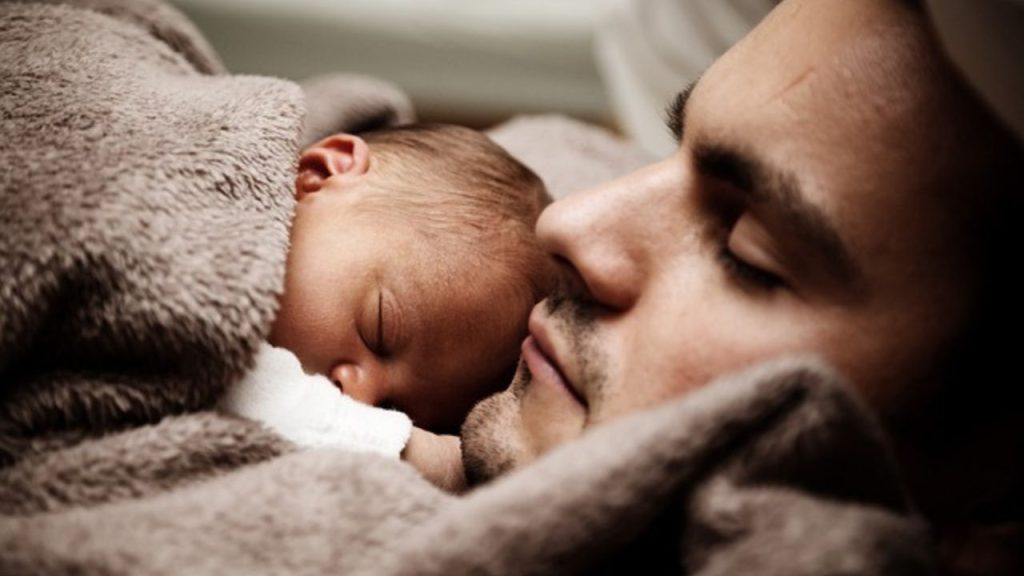Can baby sleep on tummy? Learn 7 crucial facts about tummy-sleeping, including risks, safety guidelines, and expert advice to keep your baby safe.
Can baby sleep on tummy?
While tummy-sleeping may be natural or even preferred by some babies, it is worthwhile considering facts and evidence behind this practice. In this article, we’ll talk about risks, recommendations and practical tips supported with actual case studies and research that will help you make the best decisions for your baby.
Why Is Sleeping Position Important for Babies?

Sleeping position matters because it directly impacts your baby’s safety, comfort, and development. This is essentially one of the ways that the way a baby sleeps can increase or decrease the risk of sudden infant death syndrome, which is the unexplained death of an otherwise healthy infant under one year of age. Since public health campaigns launched the “Back to Sleep” initiative in 1994, encouraging babies to sleep on their backs, the rates of SIDS have dropped over 50%.
However, some parents wonder if tummy-sleeping has its own benefits or is there some situation that makes it kind of okay. Let’s break it down.
What Are the Risks of Tummy-Sleeping?
1. Increased Risk of SIDS
The American Academy of Pediatrics says that stomach sleeping can cause airflow obstruction, which may lead the baby to breathe carbon dioxide again. This means that the baby is likely to inhale some of their exhaled air, reducing the amount of oxygen they obtain.
Case studies also support this risk. For instance, in 2018, a study was published in the *Journal of Pediatrics* examining 250 cases of SIDS; of those babies, **73% were sleeping on their stomachs**. This shows how related sleeping on one’s stomach is to sudden, unexplained deaths due to infant suffocation.
2. Risk of Suffocation
When a baby sleeps on their tummy, especially on a soft surface, their nose or mouth can become pressed against the mattress or bedding. Unlike older children or adults, babies lack the strength and motor skills to lift or turn their heads effectively, which increases the suffocation risk.
3. Difficulty Regulating Body Temperature
Tummy-sleeping also increases the potential for overheating, another SIDS risk factor. Because the face and chest of babies are exposed to open air when they sleep on their backs, they lose body heat more efficiently than if they slept on their stomachs. Tummy-sleeping traps heat inside, which can easily become an unsafe rise in body temperature.
Are There Any Benefits to Tummy-Sleeping?

While the risks generally outweigh the benefits, there are a few situations where tummy-sleeping might come into play:
1. For Babies With Specific Medical Conditions
Some pediatricians recommend tummy-sleeping for babies with certain medical conditions like gastroesophageal reflux disease. However, these cases are exceptions and can only be performed under the guidance of a healthcare provider.
2. When Babies Are Awake
Tummy time is one of the important physical developments in babies, though it should be when they are awake and under supervision. This will establish more strength in the neck, shoulders, and core muscles, which are going to be hard at work for rolling over and sitting up. Tummy time during sleep is unsafe.
Case Study: Effects of Sleep Positioning Campaigns
The **National Institute of Child Health and Human Development (NICHD)** conducted a thorough study showing the substantial difference made by educating parents on safe sleep positions. Over 70% of babies in the U.S. were put to sleep on their stomachs, which was quite common, before the “Back to Sleep” campaign launched in the early 1990s. By 2001, that number had been reduced to 11%, but SIDS rates fell by as much as 50%.
However, the same study reported that **15-20% of parents still let their babies sleep on their stomachs**, usually because they find it comfortable or claim the baby likes it. This highlights how even though greater awareness is generated, there are still some misconceptions concerning tummy-sleeping.
What If My Baby Rolls onto Tummy?

1. Always Put Babies on Their Back First:
Place your baby on his or her back whenever you put him or her to sleep, even if they start rolling over.
2. Stop Swaddling:
Once your baby begins to roll, swaddling becomes unsafe as it can restrict their arm movement, making it harder for them to push up or turn their head.
How to Establish a Safe Sleep Environment
To reduce the hazards of tummy-sleeping, it helps to establish a sleeping environment that is safe. Here are some best practices to follow.
1. A Firm Mattress
The mattress in your child’s crib should always be firm and tightly fitted inside the crib. Memory foam or soft surfaces are a no-no.
2. No Loose Bedding
Keep the crib blanketed free of blankets, pillows, stuffed animals, and bumpers. These can cause suffocation.
3. Dress Baby Appropriately
Dress the baby in a lightweight, breathable sleep sack or onesie to avoid overheating.
4. Share a Room, Not a Bed
The AAP recommends room-sharing (but not bed-sharing) for at least the first six months. Place the crib or bassinet within arm’s reach of your bed for easy monitoring.
Common Myths About Tummy-Sleeping
Myth 1: “My baby sleeps better on their stomach.”
While a few babies might seem to settle faster on their tummy, the safety risks outweigh the convenience. Finding alternative soothing methods, such as swaddling or using a pacifier, is safer.
Myth 2: “Tummy-sleeping helps prevent flat head syndrome.
It is indeed true that long periods of sleeping on their backs increase the incidence of flat spots on the head of a baby (positional plagiocephaly). This can be mitigated with supervised tummy time throughout the day, with frequent changes in head position, and ensuring that the baby is not always sitting in the same spot (e.g., car seat, bouncer).
Myth 3: “It’s okay because my parents let me sleep on my stomach.”
While sleeping on the tummy was a common practice in yesteryear, more research now links it to SIDS. Science and awareness have brought a safer sleep environment today.
When Can Babies Safely Sleep on Their Tummy?
Most experts believe that once a baby has reached **1 year of age**, SIDS risk is very low, and they can enjoy lying as they please, including their tummy. At this age, they have better motor control and stronger neck muscles with minimal risks of having breathing problems.
Last words
Some mothers may feel tempted to allow tummy-sleeping, but there is a need to prioritize safety, and pediatric experts have already set strict guidelines. Facts are clear: it is safest for your baby to sleep on his or her back in the first year of life. With proper education and precautions, you can ensure your little one sleeps soundly and safely.
Remember, every baby is different, and if you have special concerns or questions about sleeping practices, always consult your pediatrician. Safe sleep today will give you peace of mind as well as a healthier tomorrow for your baby.




